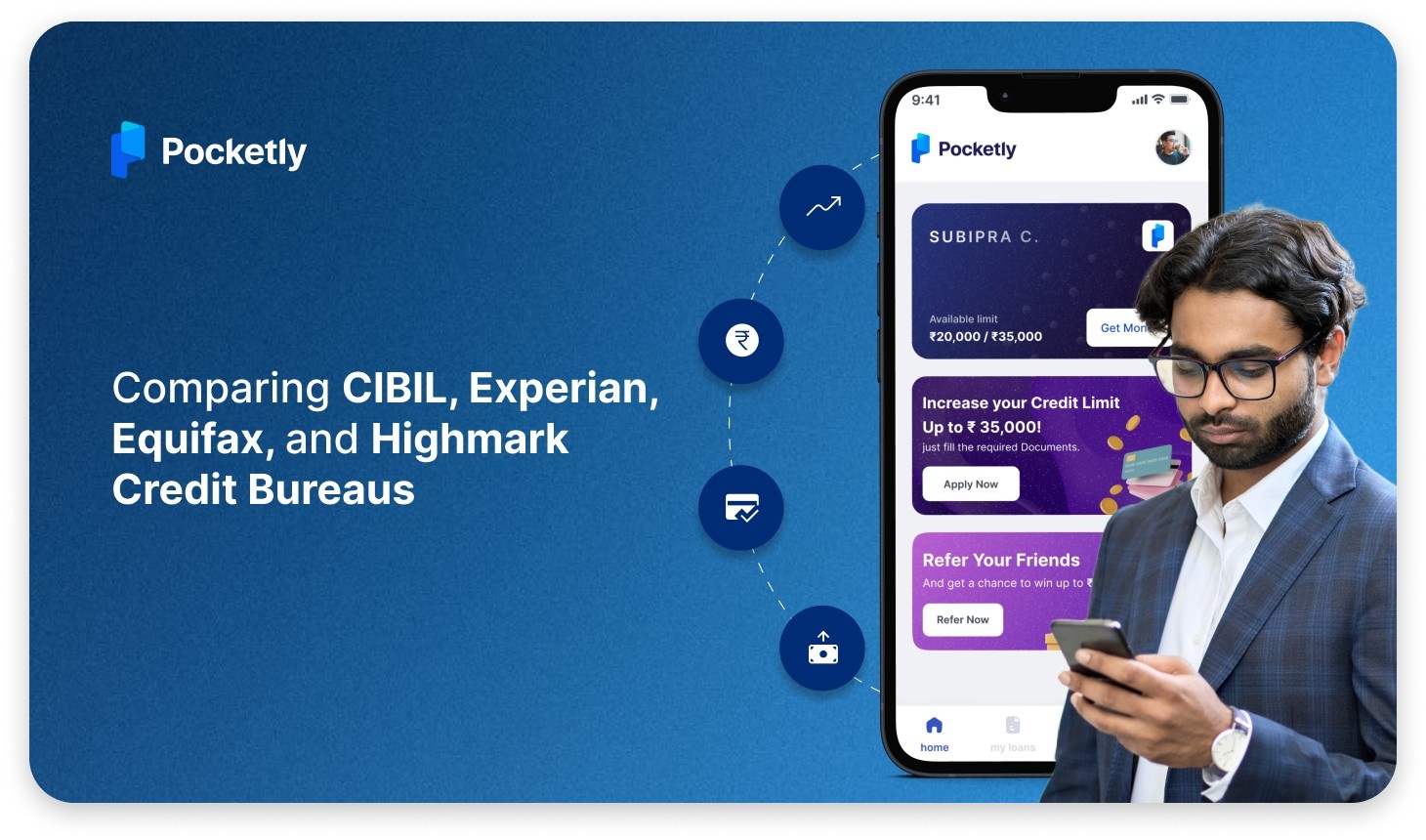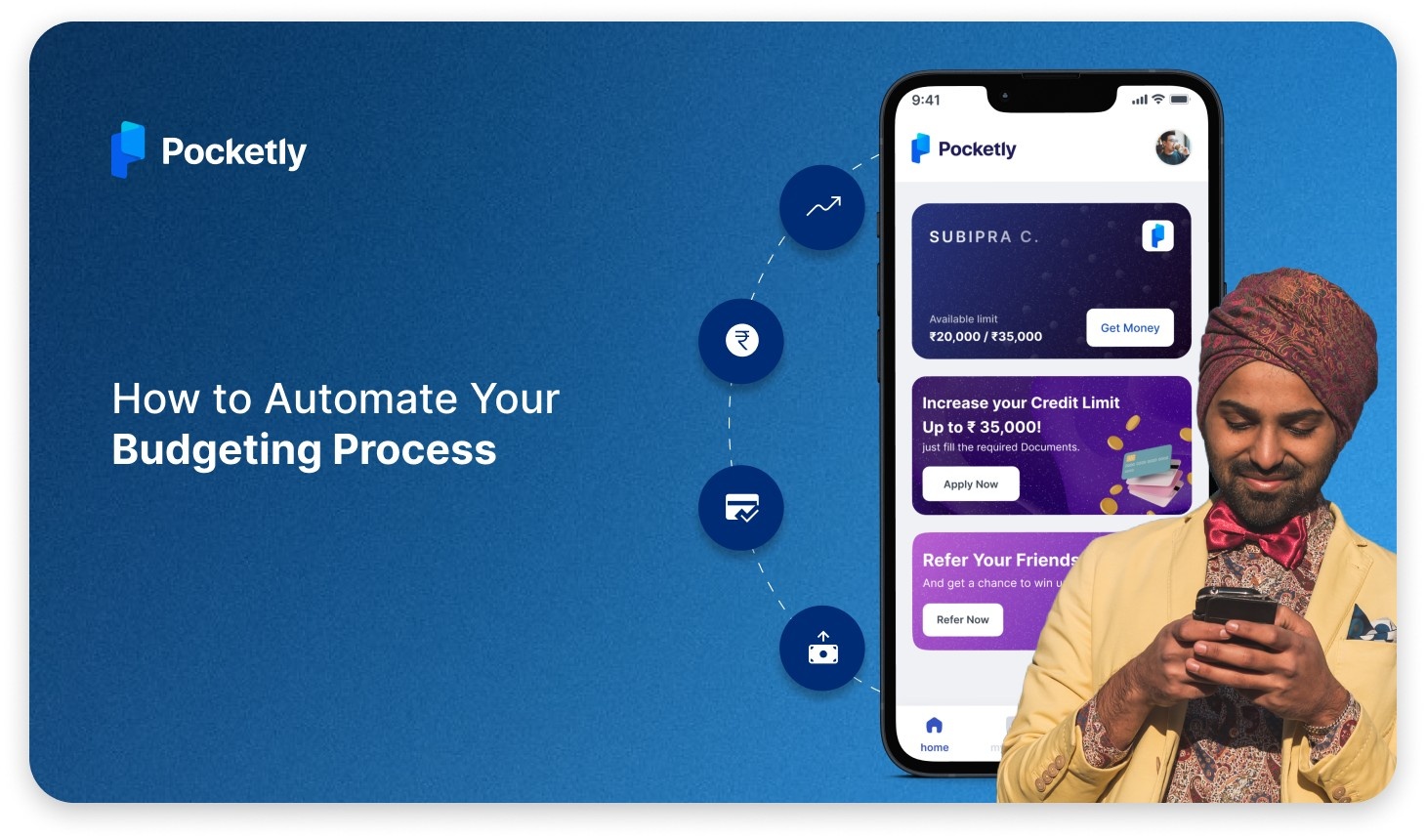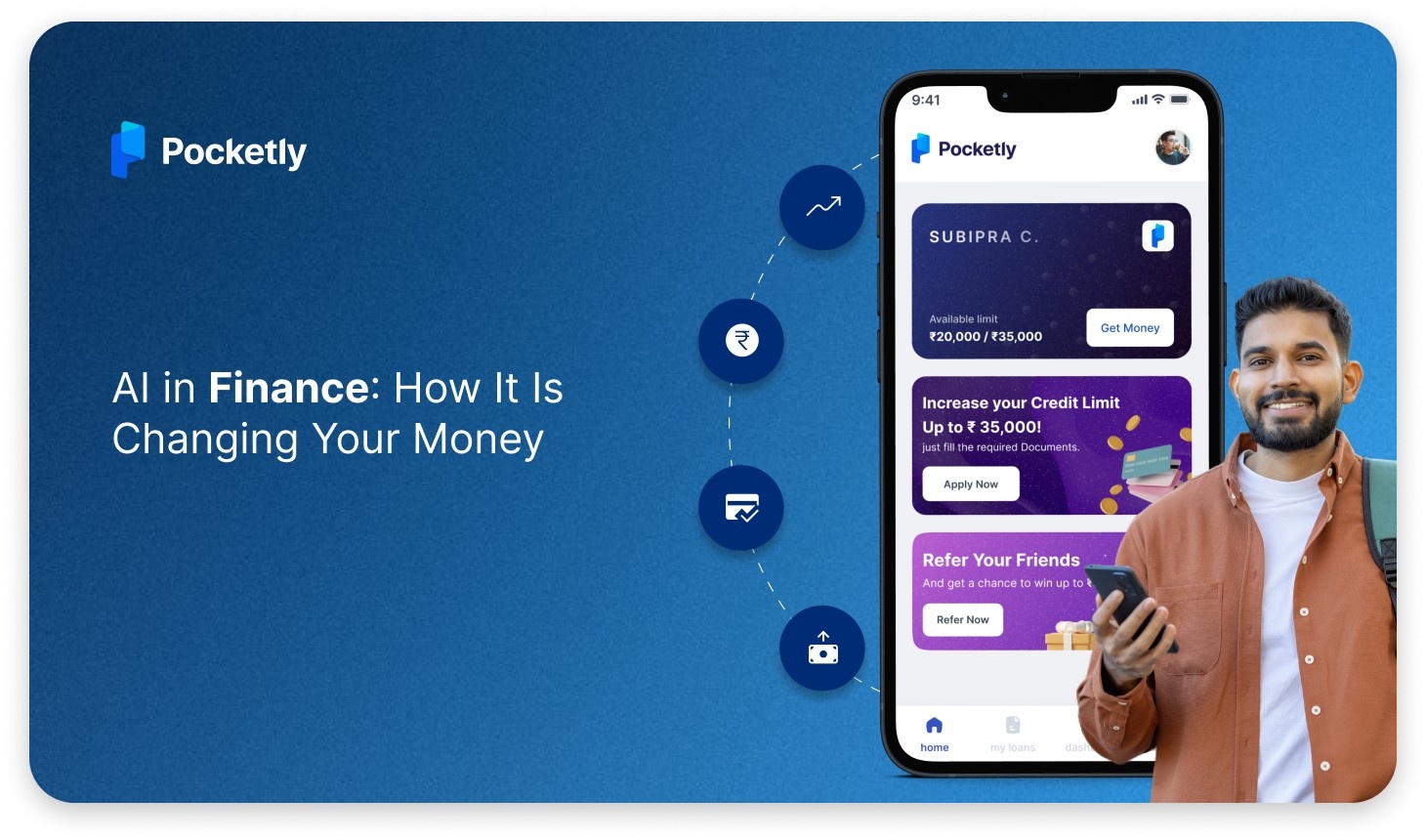
Sometimes, we all find ourselves in a pinch and need cash quickly. Whether it's for an unexpected medical bill, that shiny gadget you've been dreaming of, or just to help you get through until payday.
Personal loans can come to the rescue in these situations, and thankfully, applying for one has never been easier thanks to digital lenders. But here's the one thing that will always come up in the process: your bank statement.
You might be wondering, why do lenders care so much about your bank statement? And how can you track it the right way? Don’t worry, we’ve got all the answers.
In this guide, we’ll walk you through why your bank statement is so important, how you can get it in just a few minutes, and what you can do to make sure it works in your favour when applying for a loan.
Why Do Lenders Need Bank Statements in Personal Loan Applications
When you apply for a personal loan, your bank statement is a critical document that gives lenders a 360-degree view of your financial health and repayment ability. Here’s why it holds so much weight in the approval process:
1. Verifies Income and Stability
Lenders use your bank statement to confirm the regularity and source of your income, whether it’s a salary credit or business receipts. This helps them verify that you have a stable cash flow to support loan repayments
2. Assesses Repayment Capacity
Your bank statement provides a transparent record of your monthly income, expenses, and savings habits. Lenders analyze these transactions to gauge your repayment capacity, essentially, whether you have enough surplus after meeting all existing obligations and expenses to comfortably handle a new EMI
3. Checks for Financial Discipline
A healthy bank statement reflects responsible money management. Lenders look for signs such as:
- Consistent account balance (avoiding frequent overdrafts or negative balances)
- Timely payments of existing EMIs and bills
- Absence of dishonored transactions or penalty charges41
These factors show if you manage your finances prudently and can be trusted with additional credit.
4. Detects Unusual or Suspicious Transactions
Lenders scrutinize your statement for large, unexplained cash deposits, frequent bounced payments, or any suspicious activity. Such red flags can raise concerns about undisclosed liabilities or risky financial behavior, potentially impacting your loan approval
5. Confirms Identity and Account Ownership
Your bank statement also serves as proof of identity and account ownership, ensuring that the information provided in your application matches official banking records
6. Helps Customise Loan Offers
A strong, well-managed bank statement can help you secure better loan terms, such as a higher loan amount or lower interest rate, since it demonstrates low credit risk to the lender.
If you’re a student or a young professional exploring instant loan options, understanding how digital lenders assess your bank statement can give you an edge. For a deeper dive into the best instant loan apps available for students in India, check out our in-depth guide on top instant loan apps for students, including Pocketly and others.
The next step is knowing how to easily access and track your bank statement.
Methods to Access Bank Statements
Let’s explore the most common and hassle-free methods to download or receive your bank statement, so you can have this important document ready in no time.
1. Internet Banking Portal
Most banks offer a secure online banking portal where you can log in anytime to view and download your bank statements.
- Step 1: Visit your bank’s official website and log in using your credentials.
- Step 2: Navigate to the ‘Account Statement’ or ‘Account Summary’ section.
- Step 3: Select the account and the date range (typically last 3 to 6 months).
- Step 4: Download the statement in PDF format or request it to be emailed to you.
This method is ideal for those who prefer using a desktop or laptop and want official, bank-generated statements.
2. Mobile Banking App
If you’re always on the go, your bank’s mobile app is the easiest way to get your statement instantly.
- Open your bank’s app and log in.
- Go to the ‘Statements’ or ‘Passbook’ section.
- Choose the period you want the statement for.
- Download or share the statement directly from the app.
Mobile apps often allow you to save statements offline or share them via email or messaging apps, making submission to lenders quick and hassle-free.
3. Visiting Your Bank Branch
If you prefer a physical copy or face issues with digital methods, visiting your nearest bank branch is a reliable option.
- Request a printed bank statement from the customer service desk.
- Typically, banks provide statements for the last 3 to 6 months on request.
- Carry a valid ID proof and your passbook or debit card for verification.
Though this method takes more time, it’s useful if you need an officially stamped and signed statement.
4. ATM Mini Statement
For a quick snapshot of recent transactions, you can use your debit card at an ATM.
- Insert your debit card and enter your PIN.
- Select the ‘Mini Statement’ option.
- Print or note down the recent transactions (usually the last 5 to 10 entries).
While this is not a full statement, some lenders accept it for quick verification in specific cases.
5. Email or SMS Request
Some banks offer the convenience of receiving your bank statement via email or SMS by sending a simple request.
- Check your bank’s website or customer support for the exact SMS format or email address.
- Send the request using your registered mobile number or email.
- Receive your statement directly in your inbox or as an SMS attachment.
This is a handy option if you don’t have internet banking access but want a digital copy.
Pro Tip: Always ensure that your bank statement includes your full name, account number, bank logo, and the bank’s official stamp or digital signature (if applicable). This helps lenders verify the authenticity of your document quickly.
With these easy methods at your fingertips, accessing your bank statement is no longer a hassle. Next, let’s look at what you should check on your statement before submitting it to lenders to maximize your chances of loan approval.
Now that you know how to easily access your bank statement, it’s important to review it carefully before sending it to your lender.
What to Check Before Submitting Your Bank Statement
A clean, well-organized statement can significantly boost your chances of loan approval, while errors or missing information might cause delays or even rejection. Here’s a quick checklist of what to look out for:
1. Verify Personal Details
Make sure your full name, account number, and branch details are clearly visible on the statement. Lenders use these to confirm your identity and link the statement to your loan application. If any of these details are missing or unclear, request an updated statement.
2. Check the Date Range
Most lenders require bank statements for the last 3 to 6 months. Ensure your statement covers the exact period requested. Submitting outdated or incomplete statements can slow down the verification process.
3. Confirm Regular Income Credits
Look for consistent salary or business income deposits. These should ideally be credited on a fixed date each month. Irregular or missing income entries might raise questions about your repayment capacity.
4. Review Account Balance and Transactions
Avoid applying for a loan if your account frequently dips into the negative or has overdraft charges.
- Large cash withdrawals or deposits without clear explanations can trigger lender scrutiny.
- Ensure there are no bounced cheques or penalty charges during the statement period.
5. Check Existing Loan Repayments
If you have ongoing loans or EMIs, your bank statement should show timely repayments. This demonstrates financial discipline and reassures lenders about your ability to manage multiple credit obligations.
6. Avoid Alterations or Tampering
Never edit or manipulate your bank statement. Lenders can easily detect inconsistencies or fake documents, which can lead to outright rejection and damage your creditworthiness.
Pro Tip: If you spot any unusual transactions or discrepancies, it’s best to clarify them with your bank before submitting your statement. A clean and transparent statement builds trust and speeds up your loan approval.
Common Mistakes to Avoid while Tracking Bank Statements
When tracking your bank statements for a personal loan application, it's important to avoid certain mistakes that can harm your chances of approval. Here are the most common errors:
- Ignoring Small Expenses
Small, everyday expenses like subscriptions or coffee runs can add up. Forgetting to track these can give an inaccurate picture of your finances. Make sure to include all expenses, no matter how small.
- Misclassifying Income
Income can come from various sources, like your salary or side jobs. Failing to categorize this correctly can confuse lenders and make your financial situation look unclear. Always categorize your income properly.
- Overlooking Transaction Discrepancies
Missing or incorrect transactions can raise red flags with lenders. Always check for errors or unfamiliar charges. Spotting discrepancies early helps prevent issues down the line.
- Not Reviewing Statements Regularly
Only reviewing your bank statements occasionally can lead to missing important details. Make it a habit to review them regularly so you can correct any mistakes and stay on top of your financial health.
By avoiding these common mistakes in tracking bank statements, you'll present a clearer, more reliable financial picture and increase your chances of a successful loan application.
What to Do if Your Bank Statement Shows Red Flags
If your bank statement shows red flags like overdrafts, inconsistent income, or high spending, take these steps to address them:
- Explain Overdrafts or Negative Balances
If you’ve had occasional overdrafts, be ready to explain why they happened. Lenders will likely understand one-time issues, but show that you’ve learned from them and manage your account responsibly now.
- Clarify Irregular Income
For fluctuating income, like from freelancing or commissions, explain it clearly. Supporting documents, such as pay stubs or a letter from your employer, can help prove your financial stability.
- Reduce Unnecessary Spending
If your spending looks excessive, cut back on non-essential purchases. Demonstrating better control over your expenses can make you a more appealing borrower.
- Provide Extra Documentation
If your bank statement isn’t enough, offer additional proof of income or savings, like tax returns or investment records. This helps fill in the gaps and boosts your loan application.
By addressing these red flags, you show lenders that you’re on top of your finances, increasing your chances of approval.
Alternative Ways to Qualify for a Personal Loan Without Perfect Bank Statements
If your bank statements aren’t ideal, don’t worry. There are still other ways to qualify for a personal loan. Here’s how you can strengthen your application:
- Provide Proof of Steady Income
Even if your bank statements are inconsistent, showing a steady income with documents like pay stubs or tax returns can help. Lenders look for reliability, and this can reassure them of your ability to repay.
- Consider a Co-Signer
A co-signer with stronger financials can improve your chances of approval. This person agrees to take on the loan if you can’t repay, which reduces the lender’s risk.
- Offer Collateral for a Secured Loan
If you own valuable assets, such as a car or property, you can offer them as collateral. This can make it easier to qualify, even with less-than-ideal bank statements, as it provides extra security for the lender.
- Show Other Assets or Savings
If you have significant savings or investments, provide documentation of these assets. Lenders may overlook weaker bank statements if they see you have financial resources to back up your application.
These alternative options can help you secure a personal loan, even if your bank statements aren’t perfect.
For more tips on how to get a loan immediately with online approval, you can explore our detailed guide on applying for an Instant Online Personal Loan. This resource walks you through what lenders look for and how to streamline your application for faster disbursal.
How Pocketly Makes Personal Loans Effortless?
Tracking your bank statement is just one part of the loan application journey. If you’re looking for a hassle-free way to get a short-term personal loan, Pocketly has your back. Designed for young Indians-students, salaried professionals, and self-employed individuals, Pocketly offers:
- Instant Loans up to ₹25,000: Get the funds you need, when you need them.
- No Collateral, Minimal Documentation: All you need is your KYC and a few digital documents, no physical paperwork required.
- Quick Approvals and Transparent Fees: Enjoy a seamless application process with no hidden charges and flexible repayment options.
- User-Friendly App: Apply, track, and manage your loan from your smartphone, anytime.
Whether you need to cover an emergency, manage month-end expenses, or build your credit profile, Pocketly empowers you with quick access to funds, directly into your bank account after a streamlined KYC process.
To Sum Up!
Tracking your bank statement is a crucial step in ensuring a smooth and successful personal loan application. By regularly monitoring your statement, you not only provide lenders with clear proof of your income and financial discipline but also position yourself for faster approvals and better loan terms. Staying proactive about your bank statements means you’re always ready to seize new opportunities or handle unexpected expenses with confidence.
Pocketly is designed just for you with a user-friendly app, instant approvals, and flexible loan options tailored to students, young professionals, and self-employed individuals. Pocketly makes borrowing simple and stress-free.
Ready to take control of your financial journey? Download the Pocketly app now and experience how easy and hassle-free accessing instant personal loans can be!

















